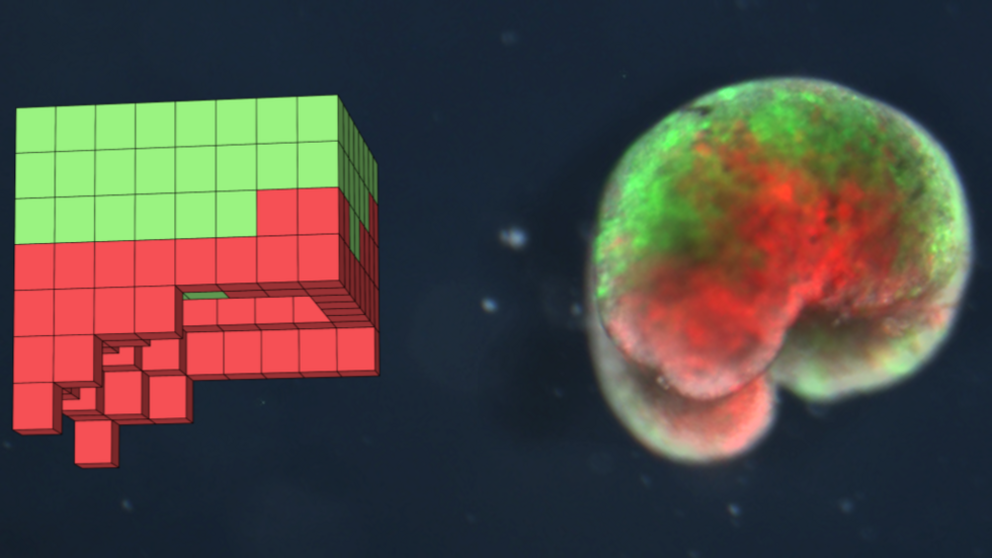Xenobots are here: Tiny bio-robots inside your veins may heal you & will definitely be weaponized by West to take out ‘bad guys’
Xenobots are here: Tiny bio-robots inside your veins may heal you & will definitely be weaponized by West to take out ‘bad guys’
Xenobots — tiny, biological robots swarms designed by a computer — are upon us. What does the birth of these strange not-quite-alive creatures mean for robotics — and for us?
Real robots are not two-legged steel boxes with a metallic voice
Mankind has been imagining advanced robot technology for a long time — pop culture is full of Terminators, Cylons, and Droids. But in fact, these humanoid designs show a distinct lack of imagination. Why have we always assumed that robots would be designed to have the same basic form as us: slightly ungainly primates trotting about on two feet, perhaps even toting a gun? The latest models make that particular notion look a bit 1950s.
One such model are the fearsome xenobots unleashed by American scientists a this week. These are biological robots less than a millimetre wide, that can move, release a payload and repair themselves. Grown from stem cells (cells that can turn into any type of body cell) that were cut into specific shapes designed by a supercomputer, they can swim inside the human body for weeks on end, working together to achieve a task.
They can walk and swim, meaning they are just one sport short of a triathlon. On top of all this, they have one more superpower — Wolverine’s healing factor. Well, it may not be ripped from Marvel comics, but they can repair themselves without any help. And when the poor little xenobots reach the end of their short but glorious lives (are they alive?) inside your body, you can rest easy with the thought that since they are entirely organic, they will biodegrade naturally. What could be more comforting than artificial creatures dying inside your veins made of nothing but harmless African clawed frog DNA?
Supercomputer creates sentience
Jokes aside, this is an astonishing leap forward in the game of playing God. But who exactly is the Dr Frankenstein to these xenobot monsters? Unnervingly, their specific shapes — they come in a range of shapes that look a bit like Tetris blocks — were designed not by the clever scientists, but rather by a supercomputer.
It did this via a kind of xenobot Battle Royale, in which tons of randomly-assembled designs faced off within a simulation to cull the weakest and mutate the strongest. Some of the winning forms are c-shaped, some triangular and there is even a doughnut-shaped one with a hole in the middle. But these are just the ones that made it to the final iteration. One wonders if they could be made to form any shape, like letters of the alphabet — xenobot soup could be a big hit, if only they were a bit bigger. (Besides, meat grown from frog embryos cannot be the tastiest. Silly idea anyway.)
Heal or kill?
So xenobots, in a nutshell, are a swarm of invisible genetically engineered semi-sentient robots designed by an artificial intelligence to live in the human body for days or weeks at a time, where they can survive without food and heal themselves if damaged. What could go wrong?
Well, probably nothing for now. But the arms race to develop xenobots for new applications is already underway, and militaries will certainly be eager to deploy them carrying biological weapons. The supercomputer that designed the xenobots was not available for comment.
Looking at the xenobots, I knew they were reminding me of something that I couldn’t put my finger on. At last, it hit me: the little guys bear a striking resemblance, both in colour and texture, to the titular villain in the 1958 Hollywood blockbuster The Blob. The only difference being of course that blessedly, the xenobots are less than a millimetre wide, and therefore present no menace to small American towns. But what if one of the team went mad and tried to create one massive xenobot, one that could open car doors and absorb teenagers? Here’s hoping the supply of African clawed frog embryo stem cells is running low in their labs. Apparently, the xenobots were named after Xenopus laevis, the frog’s Latin name. Can it be a coincidence, then, that the prefix “xeno-” is Greek for “strange”, “foreign” or “alien”? Either way, it suits these new life forms perfectly.

